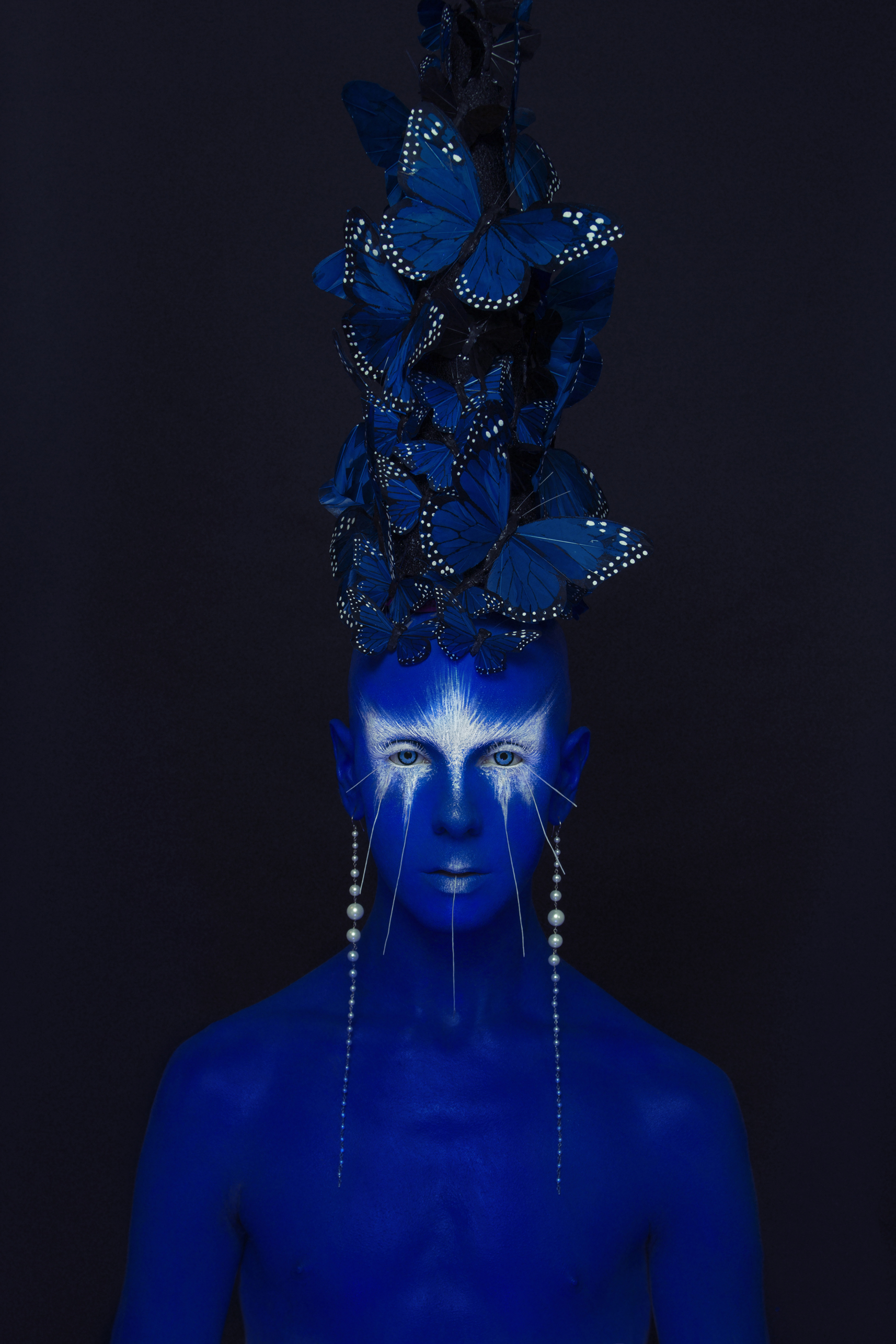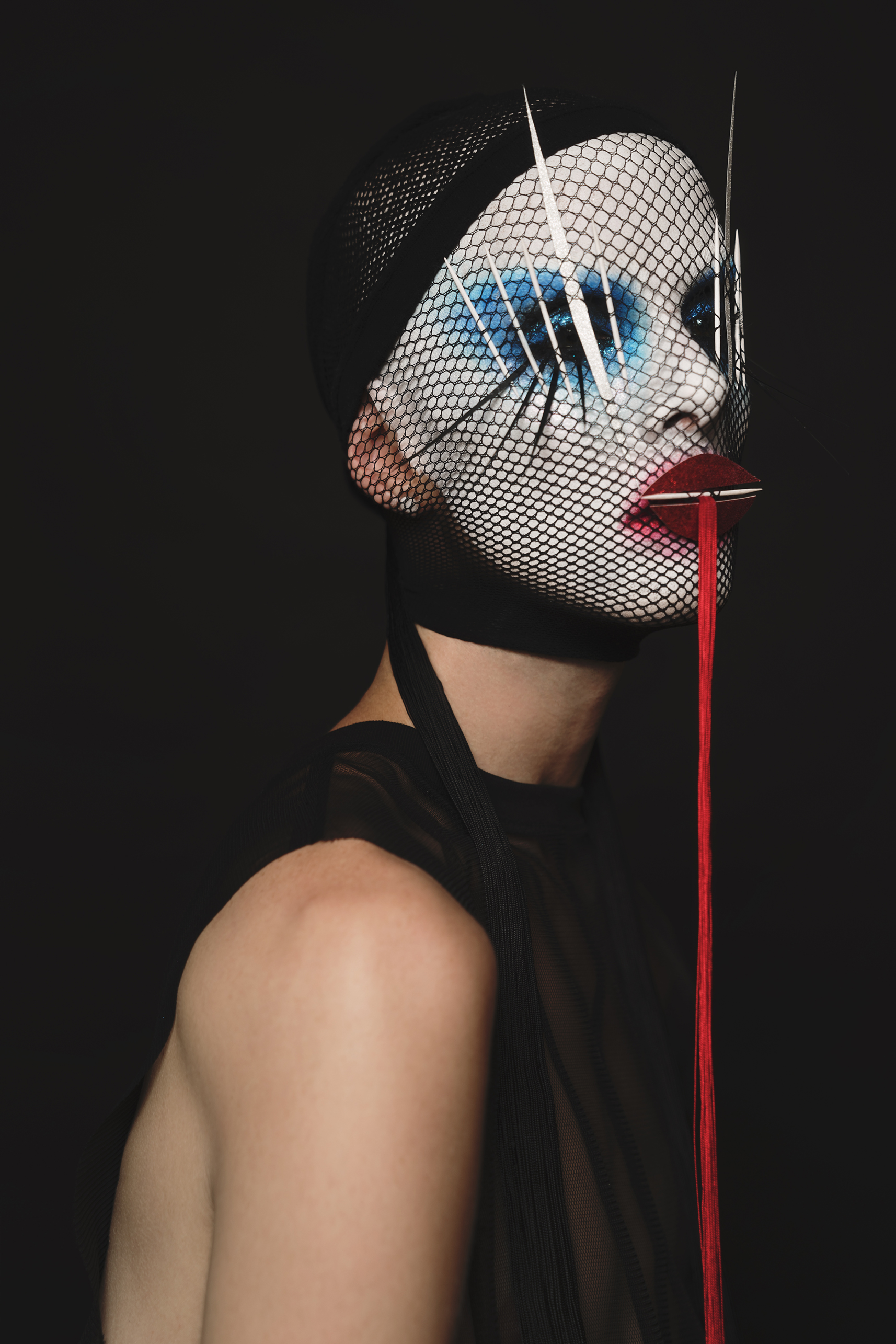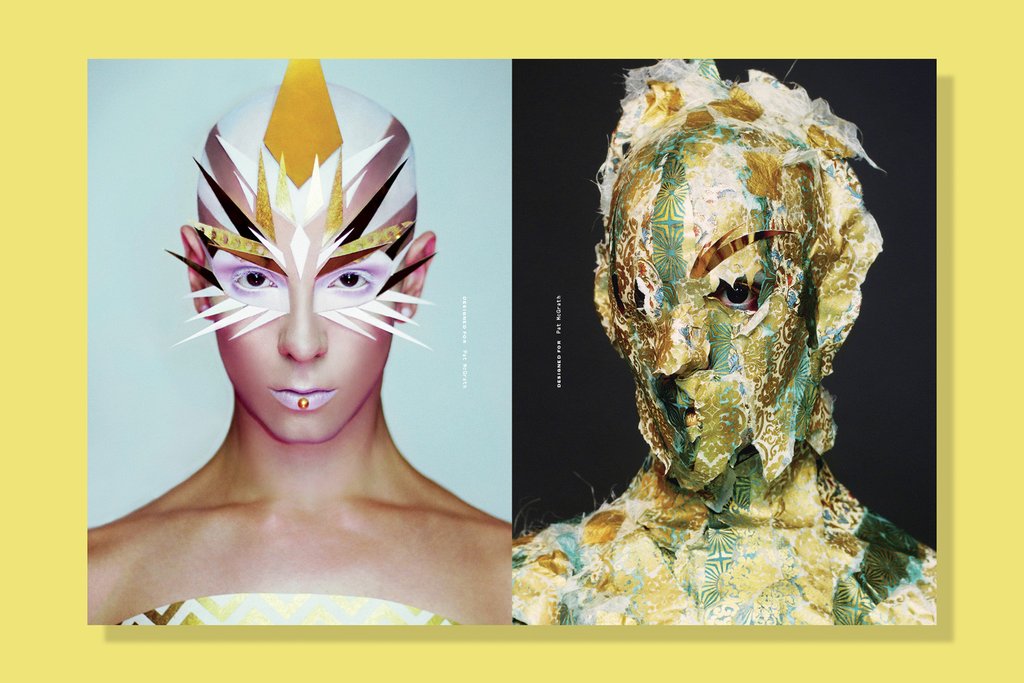Brooklyn-based Ryan Burke has been lauded as an otherworldly nightlife entity, supreme makeup muse, and visual mastermind. His glued and painted faces are the foundation for his work as brand ambassador to beauty icon Pat McGrath. His elaborate looks capture and enthrall New York partygoers at the wild club-kid socials of Susanne Bartsch and Ladyfag. His stunning portraiture evokes the elegance of Richard Avedon with an extraterrestrial twist. Arriving at Von on Bleecker Street during the bustle of Tuesday evening happy hour and awkward first dates, Burke looks as one would expect of an off-duty New York party personality — crisp and reserved, in all black. A blank canvas, so to speak.
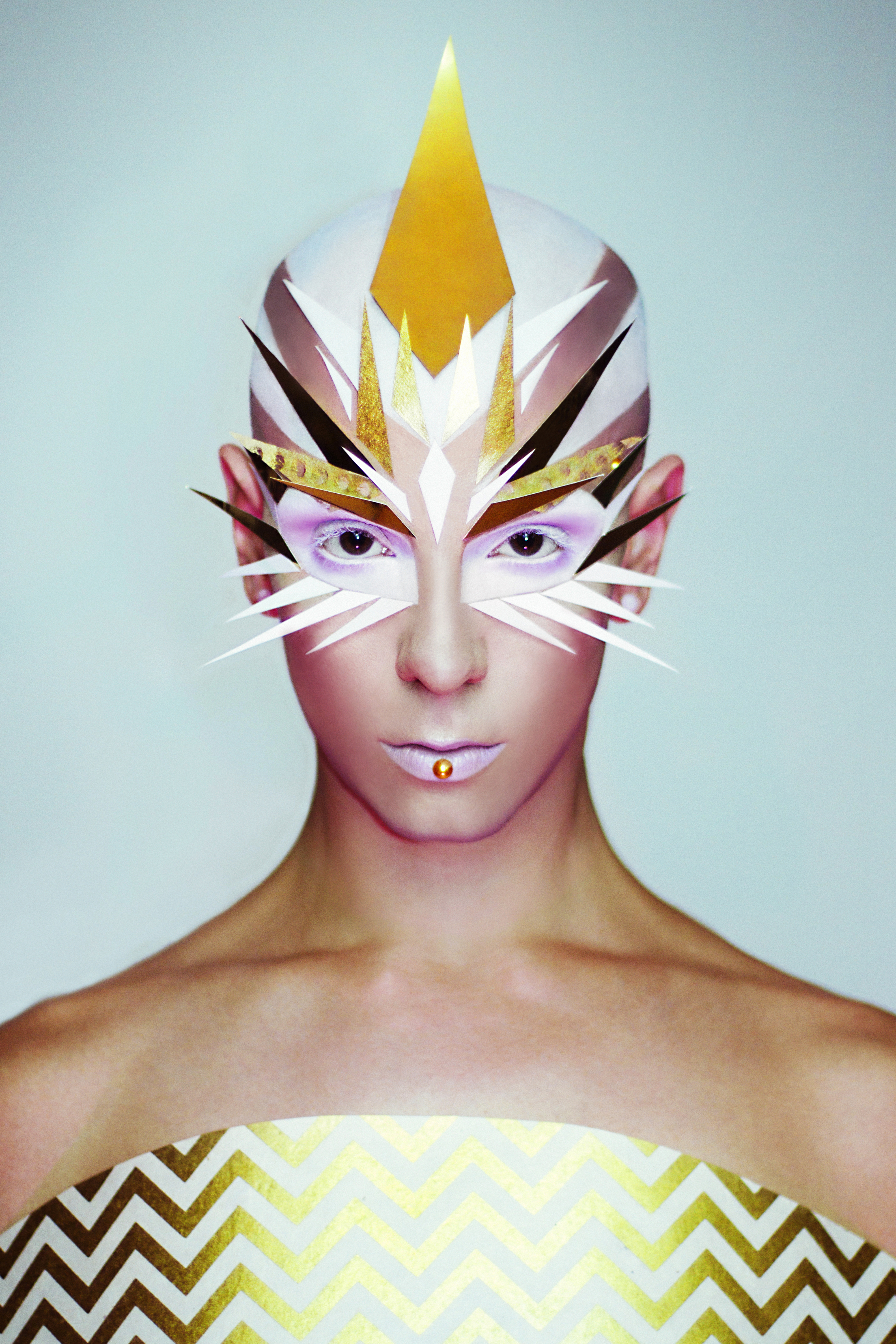
Transformation, especially in New York City, exists as a permanent state. One could argue that the very nature of artistic creation is one of transformation — a mediation of materials, an elemental change from raw dust to invention. Late in August, as every fashion guru, special event czar, and window storefront hums with the energy of pre-Fall transition, it is a rare and inspiring occurrence to witness the calm, collected presence of an artist who has built a career out of transformation. When you see it on a map, Fairfield, Virginia, looks less like a town and more like a smattering of houses along one main road. Burke describes his hometown as “rural”, drawing out the first syllable with a charming tilt of his head. Growing up in a nurturing yet restrictive environment fostered an early reliance on pure imagination in the artist, who often performed elaborate outdoor productions, dressing up in anything and everything he could find. His parents’ aversion to technology meant that Burke’s childhood was without many of the usual cultural influences — and stereotypes. “I grew up with parents who never said I had to be one way or another. When I say I dressed up, it was always gender ambiguous. I would wear dresses, I would wear capes, I would wear a suit, whatever I wanted. My parents never said, ‘don’t do this, don’t do that.’ It was more, ‘whatever you want to do,’” says Burke, “They’re very, very open people.” Glimpses of pop culture came few and far between for the artist, who re-calls one specific instance of seeing Bjork on the cover of his mother’s copy of Vanity Fair. Some research uncovered a new way of thinking about the intersection of art, music, and fashion for Burke, who still counts the experimental musician as one of his influences. “The way she presented herself, like an art form,” he says, “There’s a visual element, and it’s all interactive. It’s organic, but it’s also technological. Her work is just on a different level.” Aside from Bjork, much of his early inspiration came from the natural world, a focus that has not wavered in the years he has spent living in New York and Los Angeles.
In many of Burke’s elaborately crafted looks, nature is not only the inspiration, but also the medium. Flower petals, tree branches and butterfly wings appear on headpieces and in makeup looks, alongside cut paper shadows, pearl-like bulbs and colorful feathers. Building each image from the bottom up, Burke begins his process in vintage shops and trimmings stores, creating each look based on its eventual function. He describes the process as ultimately intuitive, “I find whatever it is that works, and then once I know that, I know what colors I’m going to work with, what the vibe is going to be. Then it’s a matter of finding the right materials, and that comes from anything. It comes from either wandering around and seeing the right texture, brainstorming, or lying awake at night, not being able to sleep.” Like a conductor of color and form, Burke arranges and experiments with each material component until the right mood strikes, pulling the various elements of fashion, makeup and art into place.

Once each look is composed, Burke sets about documenting, often against a vibrantly colored backdrop — although he prefers something more environmental. “To be honest, I hate shooting in front of backdrops,” Burke specified, “I like a natural backdrop. In my last apartment, I had this back courtyard, and I would shoot everything there. Now it’s just color backdrops.” His process of self-portraiture has always had firm roots in documentation, even back when it was purely personal. “When I was younger, I was secretly dating this guy, and he wasn’t out yet. He was in California, so it was like online dating. It was my first experience with another guy. I would create these fun looks and send him pictures of myself.” While it still retains some of its romantic edge, Burke’s current work centers on the evocation of a feeling, which he describes as, “everything has to have some sort of emotional element to it. Most of my portraits, and most of the looks, come from some sort of feeling that I had, not just a divine aesthetic, but something that I’m promoting in a way, even if I don’t realize it at the time.”
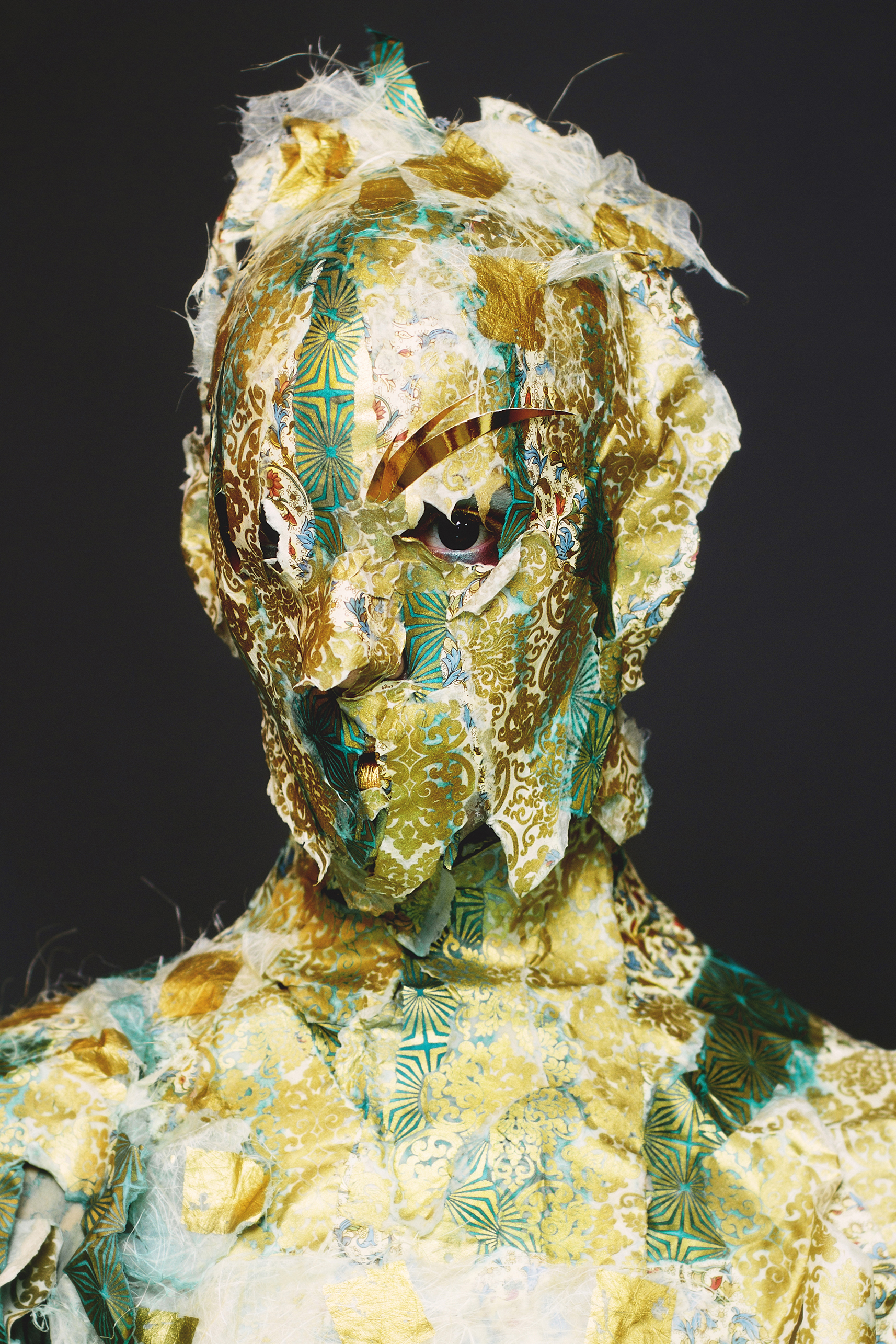
While his two-dimensional work succeeds in capturing a sense of the sublime, the performative aspect of Burke’s work adds an entirely separate element — movement. Tassels and pom-poms sway amongst sweeping fringe and long chains sparkle from piercings as Burke saunters through events and parties. The effect is highly musical, a concept that the artist embraces, saying, “rhythm is huge, it’s the biggest thing. Rhythm to me involves movement, but it also includes the way things flow and connect. That’s funny too, because music is my other background. Since middle school, I had private lessons, and I was in band. I thought I was going to be a musician.” Burke’s relationship to composition is highly apparent in both the movement and structure of his work, which at times is playful, and others deeply symphonic — almost reminiscent of notes on a sheet of music.
At once tactile and transcendent in their ambiguous beauty, Burke’s portraits have caught the attention of everyone from fashion designers to television executives, allowing him to bring his vision to a variety of platforms including art installations and runway shows. Despite working for years in the fashion and beauty industries, Burke is wary of traditional notions of “success” in those fields. “Being popular is not success to me, that doesn’t matter. Having integrity, and ideally enough money to live — to be able to freely create the things I want to do. That’s it, I don’t need extra, and I don’t need approval from everybody. I don’t need all of that, I just want to do what I like to do.”
Many artists who work in visual styling pull features and inspirations from film, television, vintage fashion, and fine art with elaborate mood boards and magazine clippings — Jean Harlow brows, sweeping ’70 bangs, De Stijl geometry. While he has come to accept certain cultural influences over the years, Burke’s true inspiration comes from a heightened sense of emotional realization. “I look at artists like Cindy Sherman, for instance, and her transformations are very political. She’s trying to address something. There’s always a point, you know? For me, it’s not political, because it comes from a different place. I’m not thinking in terms of all of these outside things. It’s not about one idea, not about trying to make a point. It’s just an expression.” As dusk approaches and bar noise begins to permeate every back corner table, the subject of personal transformation arises again, a concept best described in the world of underground nightlife as “feeling your fantasy.” “It’s exactly that,” Burke muses, gesturing in mid-air as if molding clay, “You get to feel like your ultimate form.”
For more information please visit ryanburkephotography.com.
Posture’s third print issue — The Boss Issue — is now available for purchase. This 168-page magazine features exclusive interviews with artists, theorists, activists, and nightlife icons. The conversations dive deep into ideas of leadership, success, and organizing in queer/trans/non-binary and WOC communities. This issue also represents a new design direction for Posture, one that reflects the mission and purpose of the publication.
Order your copy today through our online shop: shop.posturemag.com.

